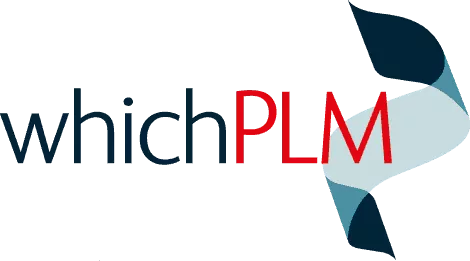
In his first piece for 2022, WhichPLM Founder Mark Harrop shares his tips on delivering a successful digital transformation project – a project incorporating your entire value chain.

Technology evaluations, process change, and technology disruption must be on every brand and retailer’s agenda for at least the next few years – even longer for those strategic thinkers that can look out and over the horizon.
It’s time to act
C-level executives within our industry urgently need to audit their entire end-to-end technology ecosystems, measuring every core process and every, solution against the industry best practices. Until they really understand where they are they will not be able to prioritise their future transformation objectives.
Supply chain practices of the past simply don’t work in the post-pandemic era. The reality is that businesses of all kinds need to move at speed to help resolve the challenges of historical practices – practices that are in some cases manual or, at best, a mash-up of point solutions that operate in a more autocratic way, with brands & retailers taking absolute control over design, development and to some extent manufacturing. Most of which is operated via a remote methodology using PLM and, even then, with lots of disconnected point solutions and data gaps that have to be managed manually, especially as this relates to shared data.
It’s not only the older methods (solutions & processes) that need consideration, but also the issues brought about by the last two years, when the pandemic changed the way of working for everyone. And as we enter our third year of COVID, it’s way overdue for brands & retailers to do some introspection, and include their value chain partners in a solutions audit designed to provide insights into required changes and prioritisation. It’s time to include all critical tier (1, 2, and even 3rd) partners, enabling these businesses to better understand the challenges related to all parties, and what is still optional today but will soon become law – at least for New York City that is about to pass a new assembly bill (the Fashion Act) requiring any business over $100 million in revenue that is selling or manufactures fashion to disclose environmental and social due diligence policies. This is a catchall bill that will affect every international fashion business that wants to sell fashion products in New York.
Rather than waiting to be forced, it makes perfect sense to begin to use shared data to communicate new collaborative processes that will help lead to improved sustainability practices using a seamless platform of solutions. Current methods are filled with huge gaps, disconnected point solutions that can’t share data easily, built in delays, a lack of data synchronisation leading to errors, potential partner mistrust, and the inability to analyse the entire multi-platform(s) datasets to help create intelligence, greater efficiencies, and insights. The reality is that current supply chain solutions and methods of working are far from frictionless!

Moving to a data connected value-chain is clearly the answer. Simply put, technology has emerged as a critical business enabler that can be used to turn historical and manual supply chains into new, digitally connected value chains.
Today, continuous supply chain issues (linked to increased material prices, higher labour cost, increased logistic costs etc.) are impacting companies’ bottom line profitability. Sadly the new reality of 2022 has exploded the importance and critical urgency of turning the old-world supply chains into modern-day, data driven value chains.
Businesses can no longer accept the constant issues of delays, broken supply chain inefficiencies, and lower margins that have hindered many retailers and brands, especially over the last couple of years.
It’s not all bad news
Retailers, brands and some disruptive technology vendors have started to reinvent platform models and come up with smart approaches for helping to modernise and change old supply chain models and their supporting technologies, transforming them into new digital platform value chains. These data-driven platforms are both bold and are being designed to be broad enough to take in all of the critical solutions and datasets that can be joined via open APIs and open toolsets. It’s these bold and disruptive transformations that will help deliver major advantages for businesses, and its these financial benefits that in turn will support the delivery of significant technology reinvestments for businesses to open competitive gaps even further from their traditional competitors who may be slow to transform their own processes and technology stacks.
WhichPLM process and technology audits
We are proud and fortunate to work together with some of the world’s leading brands and retailers from all corners of the globe, large and small, who are the change makers of our fashion sector. They are constantly auditing, re-evaluating, and advancing their processes, technology solutions, digital partner collaborations and methodologies. These smart partners are those that don’t except can’t; they think outside-of-the-box and are always open to change and have can-do attitudes. They constantly reinvent themselves, looking internally for those change makers and externally for expert specialists, working together reimagining how they might transform their current architecture, solutions, and processes, helping to connect and share real-time data between all solutions.

There is no shortage of new, technology-transformative initiatives – far from it in fact – and it’s by auditing and measuring, together, we can decide on what to tackle and in what order. WhichPLM is currently acting as an advisor to seven technology businesses, all of them offering clever, exciting leapfrog solutions that each offer promising advantages over older legacy solutions and outdated methods.
It’s never simple when looking to transform technology.
One of my concerns for businesses that are looking to transform their technology stack, is that they tend to focus on the bigger solutions – the likes of PLM, 3D, and ERP solutions – to solve the bulk of their problems, none of which is the right approach when looking at the end-to-end challenges. The fact is that PLM solutions are limited and are simply not able to deliver every critical process that most businesses rely on. 3D is another ‘point’ solution that delivers specific tasks and, in many cases, not all the 3D solutions are able to deliver on the full requirements of 3D working for retailers’ and brands’ broader use cases. In a lot of cases 3D is not connected to the main business systems, like PLM, DAM, and PIM. ERP is critical to the buying and planning of both bulk materials and products but is not remotely connected to the downstream design solutions. None of these solutions is, at present, capable of deep integration(s) to many of the critical point solutions that are used in a retailer, brand or their supply chain partners.
Businesses of all types need to think very carefully before simply adopting one of the bigger platforms that are being marketed as solving most of their business problems. The truth is that this is simply not possible. So how can businesses resolve these gaps? The reality is that these businesses must first audit each of their critical process, measuring their maturity level against the industry best-practice benchmark, audit supporting solutions versus competitive newness, and analyse the inputs and output datasets, and levels of integrations, amongst a long list of other related activities. Without which, these same businesses will not be able to take full advantage of the end-to-end value-chain automation opportunities, and they will simply not be able to scale; they will not be able to analyse the true potential of the cross-platform data that will be required from a best-in-class, fully responsive ‘value-chain’.

Technology transformations can be time consuming and expensive, so with this in mind, it makes perfect sense to first evaluate where the business truly is (your business benchmark score) on the industry maturity benchmark. Once you understand what your score is for each of the process levels, you can then link each process and its related technology back to the value that improving the processes and tech will bring to the business, including the time it will take and the business drivers.
What to start with first?
Do you go after the bigger financial returns that might take many months or even years to deliver, or do you go after the easier wins – the low hanging fruit? It’s also worth noting that value can be measured both in monetary and intangible terms. Over many years, the return on investment (ROI) has been the primary method of calculating the financial ROI, but beyond financials there is no easy way to provide a formal justification for the decision on what value to prioritise when it comes to the bigger picture. Keep in mind that we must include intangible benefits, which can include the reputation of an organisation related to the likes of corporate social responsibility, sustainability, fair labour standards, international standards, and the impact that these benefits will have on environment, or the wellbeing of its staff, both within the retailer or brand and at its manufacturing partners. These examples are just the tip of the iceberg when it comes to the list of intangible values.
Successful technology transformations are those that carefully consider the full value-chain opportunities, both quick wins (low hanging fruits) and those that will come in the longer term (usually, one to three years), and once we bring all the datasets into a single, shared location, then that’s when we can start to use artificial intelligence (AI) and machine learning (ML) to create extra value. Those longer-term activities will no doubt include near-real-time planning of products, materials, and manufacturing, and its these opportunities that will help to deliver new process introductions leading to business efficiencies, but also millions of dollars in extra value, and greater gaps between your business and your nearest competitors.
You can’t know where you are going until you know where you are!





